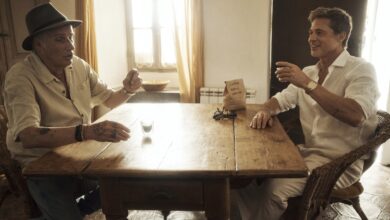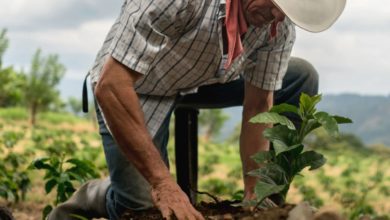V týchto dňoch si pripomíname 25 rokov od masakra v Srebrenici, pri ktorom vojská Republiky Srbskej pod vedením generála Ratka Mladića zabili viac ako 8 000 bosnianskych moslimov. Tento krutý čin si teraz v krajine symbolicky pripomenuli kávou v tamojších tradičných porcelánových pohároch.
Šálky sú súčasťou spomienkovej akcie „ŠTO TE NEMA“ z dielne dnes už Američanky Aidy Šehovićovej. Tá ju spustila ešte 11. júla 2006 v Sarajeve a rok čo rok sa predstavuje v inom meste. Jej súčasťou bolo pôvodne 923 šálok od srebrenických žien, ktoré spomínaný masaker pripravil o synov, manželov, otcov či starých otcov.
Kávový rituál sa tentoraz uskutočnil v srebrenickom centre a príbuzní naplnili za každú obeť jednu šálku. Kávu nalievali z tradičných džeziev do tzv. fildžánov, teda malých šálok, z ktorých ju v tejto oblasti pijú.
Celkovo bolo počas spomienkovej akcie kávou naplnených viac ako 8 000 fildžánov. Tie pripomínajú 6 643 obetí, ktorých telá sa našli a ďalších viac ako 1 000, ktoré doposiaľ neboli objavené. Na zozname obetí je aktuálne 8 373 mien, medzi nimi aj 74 žien a 33 detí do 15 rokov.
Vraždenie prebiehalo v priebehu niekoľkých dní a srbské jednotky nemali žiadne zľutovanie. Z utečeneckých táborov vzali všetkých chlapcov a mužov vo veku od 17 do 70 rokov a zabíjali ich v komplexe zinkovne a pri tzv. bielom dome v Potočaroch.
Prikladáme zábery z viacerých minulých podujatí ŠTO TE NEMA z instagramového konta tejto iniciatívy.
View this post on Instagram
Today we are sharing Jasmina Dervišević Ćesić’s fildžan story. She lives in Massachusetts, USA and participated with her two children in the 2016 iteration of the ŠTO TE NEMA nomadic monument in Boston, USA. She donated fildžani that were gifted to her by her family when she was visiting them in her hometown of Višegrad. She is the author of “The River Runs Salt, Runs Sweet: A Memoir of Visegrad, Bosnia,” a young woman’s powerful and inspiring memoir of love, loss, and survival during the Bosnian War. She started writing her story to bear witness to what happened to her country and to the people she loved and lost. Ultimately she realized her book was about more than Bosnia. It was also about how we manage to endure, to support one another, and to recover from the most difficult of trials. Jasmina writes, "We live in a dangerous world. And we live in dangerous times. It is comforting, I suppose, to pretend that those voices that sow division and fear and ethnic hatred are echoes of long ago and far away. They are not. They are always far closer than we like to imagine. And there is only one way to confront them. By standing up to them, courageously calling them what they are, by recognizing that only we have the power to stop them. For years now, I have been sharing my story with hundreds upon hundreds of people even though it never gets any easier. But, I was driven to write my story and tell it because I felt that there needed to be documentation to prove that it had happened. History is based on the testimonies of survivors and creates a setting stone for future generations to look back on and learn about." Jasmina’s fildžans will be part of this year’s ŠTO TE NEMA monument. Images: 11th annual iteration of ŠTO TE NEMA at Copley Square in Boston, USA on July 11, 2016. Jasmina is pictured in the top row along with out other volunteers in the first image. Photo: @mquirozs ~ tekst na bosanskom je u komentarima @sto_te_nema_ @aida_sehovic @pcrcbih #StoTeNema #StoTeNema2020 #FildzanStories #fildžani #SrebrenicaGenocide #Srebrenica25 #PCRCBiH
A post shared by ŠTO TE NEMA nomadic monument (@sto_te_nema_) on Jul 2, 2020 at 6:18am PDT
View this post on Instagram
Amina Sinanović and her family came to the ŠTO TE NEMA iteration in Venice last year. They donated fildžani that belonged to Amina’s late father-in-law. For Amina, fildžani are symbols of spending time together with family and they evoke beautiful memories of her childhood. Both of her daughters wrote about their experiences taking part in ŠTO TE NEMA in Venice last year. "My name is Sara and I am 9 years old. I am from Venice, but of Bosnian descent. Last year, I took part in building the ŠTO TE NEMA monument which helps us remember the victims of the Srebrenica genocide on July 11th. The moment we filled all the cups with coffee, the number of cups seemed endless. It was only then that I understood how people were killed during this genocide. I hope that what happened in Srebrenica will never happen to anyone again." "My name is Nerina and I am 14 years old. I was born in Venice, but my parents are Bosnian. Last year I had the honor of being a part of ŠTO TE NEMA in Venice. I realized that many people from all over the world, not just from Venice, did not know about the genocide in Srebrenica. On that day, we had many volunteers who were explaining to people what had happened in Srebrenica in 1995 in order to raise awareness. I honestly didn’t expect so much ignorance about the history and events of the 1990s and that was disappointing. This didn’t happen that long ago. It’s been a little over 20 years. It is difficult to describe the pain, sorrow, and agony from Srebrenica, it is actually impossible. But you could feel some of these emotions looking at all the fildžani that were on the ground. You did not need words." @sto_te_nema_ @aida_sehovic @pcrcbih #StoTeNema #StoTeNema2020 #FildzanStories #fildžani #SrebrenicaGenocide #Srebrenica25 #PCRCBiH
A post shared by ŠTO TE NEMA nomadic monument (@sto_te_nema_) on Jul 8, 2020 at 4:35am PDT
View this post on Instagram
Today we are sharing Alma Kanić Franco's story. Alma organized a Srebrenica Memorial Dinner in 2010 hosting Aida Šehović for the Bosnian community in Albany, USA. Alma writes, "My mom was born and raised in Srebrenica. All of my mom's side of the family were in Srebrenica during the whole war. Over 20 of them became victims of the genocide. Out of many of our family members killed, my two first cousins, Samir and Enes Huremovic, both 17 years old, are always the hardest to think of. They were just one year older than me. We grew up close together celebrating all the holidays and birthdays together." Alma continues, "Some of us survived the genocide and lost many of our close and distant family members to the genocide in addition to neighbors. We gathered many cups and donated them, some of which were used by the victims of the genocide, which of course made this contribution even more meaningful." ~ Danas dijelimo sa vama priču Alme Kanić Franco. Alma je organizovala večeru povodom komemoracije srebreničkog genocida 2010. godine za bosanskohercegovačku zajednicu koja živi u Albaniju, SAD. Na toj večeri su prisustvovali mnogi koji imaju direktnu i ličnu vezu sa Srebrenicom kao i umjetnica Aida Šehović koja je pokrenula projekat ŠTO TE NEMA 2006. godine. Alma piše: “Moja mama je rođena i odrasla je u Srebrenici. Sva rodbina moje mame je provela cijeli rat u Srebrenici. Preko 20 ih je bilo ubijeno tokom genocida. Od svih koji više nisu sa nama, meni je najteže kad se sjetim moja dva rođaka, Samira i Enesa Huremovića, koji su imali 17 godina kad su bili ubijeni. Oni su bili samo godinu dana stariji od mene. Mi smo bili jako bliski i zajedno smo slavili sve praznike i rođendane tokom djetinjstva.” Alma nastavlja: “Neki od nas su preživjeli genocid i izgubili toliko najbližih, rodbine, i komšija. U našoj zajednici smo skupili puno fildžana, a neki od njih su bili korišteni i od žrtava genocida. Fildžani koje smo donirali spomeniku naravno imaju posebno značenje.” @sto_te_nema_ @aida_sehovic @pcrcbih #StoTeNema #StoTeNema2020 #FildzanStories #fildžani #SrebrenicaGenocide #Srebrenica25 #PCRCBiH
A post shared by ŠTO TE NEMA nomadic monument (@sto_te_nema_) on Jul 1, 2020 at 2:20am PDT





